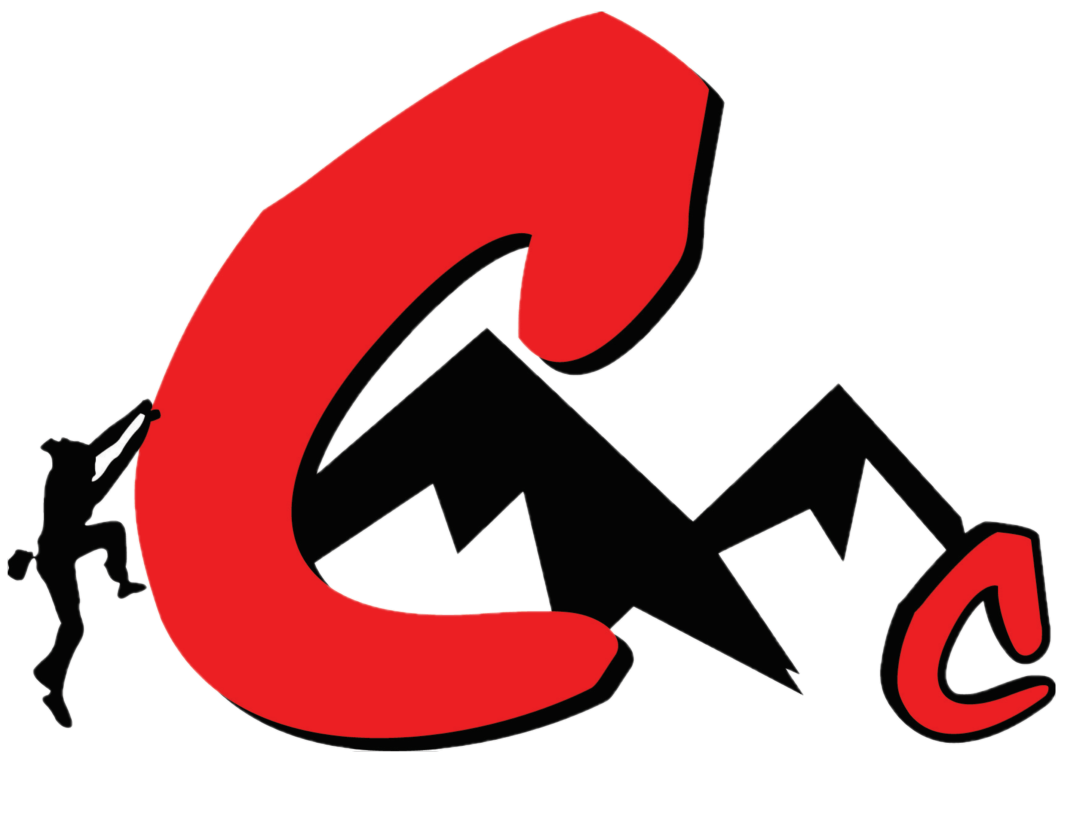Meet Kit List
This kit list should serve as a starting place for the kit required for any club walking or summer climbing meet. If you have any questions or would like to borrow some of the club gear please speak to a member of the committee.
A condensed printable tick-list of this page can be downloaded here.
Table of Contents
Hut or camping?
Personal Day Sack
Clothing
Technical Climbing Equipment
Guidance on Technical Gear
HUT OR CAMPING?
Hut
- Sleeping bag
- Pillow case
- Slippers/Flip flops
- Personal toiletries (+ towel)
- Tea Towel
- Food for duration of trip
- Casual clothes for evenings
Camping
- Tent (make sure you know how to put it up!)
- Sleeping bag (2-3 season should suffice)
- Sleeping mat
- Head torch or battery lamp
- Personal toiletries (+ towel)
- Flip flops for showers
- Cooking set (stove, fuel, pots/pans, utensils)
- Washing up set (liquid, sponge, tea towel)
- Food for duration of trip
- Casual clothes for evenings
PERSONAL DAY SACKS
Summer Conditions
- Light Rucksack (around 20L for multipitch routes – enough to carry water, snacks, and a jacket)
- Hat, Sunglasses and sunscreen
- Water bottle (min 1L)
- Lunch, Snacks & energy bars etc
- Phone (+ portable charger if needed)
- Small first aid kit (minimum plasters/blister plasters, pain relief)
- Head torch + Spare batteries
- Map of the area and a compass (+ knowledge of how to use them!)
- Any necessary guidebooks
Winter Conditions
- Rucksack (30/40L is a good size you will be carrying more layers in the winter)
- Dry bag - ideally compression (don't rely on waterproof bag cover)
- Goggles (clear or yellow if overcast, tinted/sunglasses if sunny)
- Hats/Buff/Balaclava (must fit under helmet)
- Gloves (multiple pairs if wet and mild)
- Water bottle
- Flask for hot drinks
- Trekking Poles (personal preference)
- Lunch, Snacks & energy bars etc (nothing that can freeze)
- Phone (+ portable charger if needed)
- Small first aid kit
- Emergency shelter (bothy bag)
- Head torch + Spare batteries
- Map of the area and a compass
- Any necessary guidebooks
CLOTHING
Summer Conditions
- Approach shoes / hiking boots
- T-shirts (long sleeve if fair skinned)
- Trousers/Shorts
- Lightweight fleece
- Waterproof Jacket with integrated hood
Winter Conditions
- Boots – See notes below
- Walking socks – ideally wool and bring spares.
- Warm walking softshell trousers/Leggings (ideally windproof)
- Thermal base layers - Top and leggings
- Fleece/insulation Layer
- A “Belay Jacket” (Down or Insulated Jacket with a hood) - see notes below
- Waterproof Jacket with integrated hood
- Waterproof trousers – ideally full-length side zips
- Waterproof gaiters
TECHNICAL GEAR
Minimum gear for seconding - most of this can be borrowed from the club - please see the club kit page, other necessary gear can be shared with the lead climber who will have a full rack.
- Harness
- Belay device and locking carabiner
- Helmet
- Climbing shoes
- 2 x locking carabiners
- 2 x 120 cm sling
- Nut Key
- Prusik – no need to buy a branded device. 1.5 m of 5 or 6 mm accessory cord tied in a loop is ideal. Please speak to a member of the committee if you need advice.
More info: https://www.thebmc.co.uk/what-gear-do-you-need-to-climb-outdoors?s=2
Guidance on Technical Gear
Insulation
Down – weight for weight it is warmer than synthetic but must loft (dry and unsquashed) to achieve this.
Synthetic – Very versatile and newer synthetics are catching up with down – it is very warm and it retains thermal properties when wet.
Down jackets are great in drier alpine conditions or down the pub. If it’s all you have bring it along.
More info: https://www.thebmc.co.uk/down-and-out-an-intro-to-down-gear
Boots
A standard B0 walking/hiking boot is fine for low level walks where we won’t have winter conditions.
Mountaineering boots are rated for their stiffness and the type of activity they were designed for:
B1= flexible – suitable for trekking and hill walking only. Will take C1 crampons only.
B2 = semi rigid – good for classic mountaineering and mid-grade mixed climbing, but not suitable for pure ice climbing or harder mixed climbs. Will take C1 + C2 crampons.
B3 = fully rigid – give much more support for front pointing on steeper terrain: suitable for steep ice climbing and harder mixed routes. Can take C1, C2 or C3 crampons. Less comfortable for walking long distances.
Crampons
As with boots – crampons are rated as C1 – flexible, C2 – semi rigid and C3 – rigid models. It’s vital that your boots are at least as stiff as your crampons, so you can put any crampon on a fully rigid B3 boot, but only a flexible C1 crampon on a flexible B1 boot etc – it’s best to take your boots down the shop.
More Info: https://www.thebmc.co.uk/hill-skills-your-first-axe-and-crampons
Ice Axes
Mountaineering/Walking Axe - For classic alpine ascents and climbs up to Scottish Grade II a good quality traditional axe is ideal. The picks are rated “B” and “T”. It is often recommended to get one with a stronger and better designed T rated pick made for mountaineering, rather than just a hill walking axe with a B rated pick. It should be somewhere between 55-70cm long depending on how tall you are (holding the head of the axe with your arm fully extended the bottom of the axe should just touch the top of your boot).
Technical Axes - Reverse curved technical tools come into their own at around Scottish IV and for alpine ice and mixed climbing. These are used as a pair. Models with curved shafts give better clearance and are less strenuous on really steep ground.
More Info: https://www.thebmc.co.uk/a-guide-to-ice-tools-for-walkers-and-climbers
